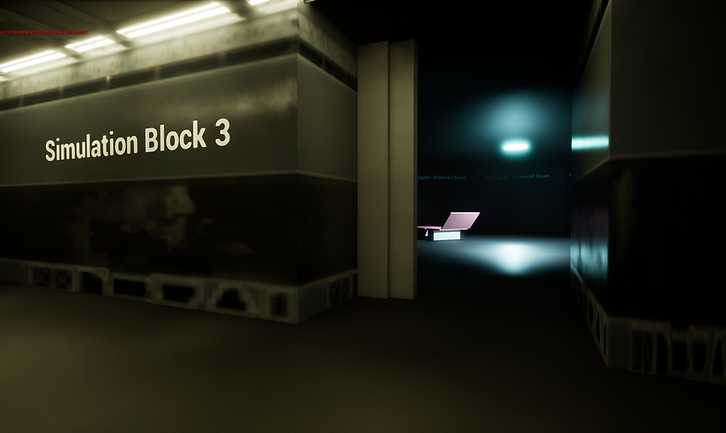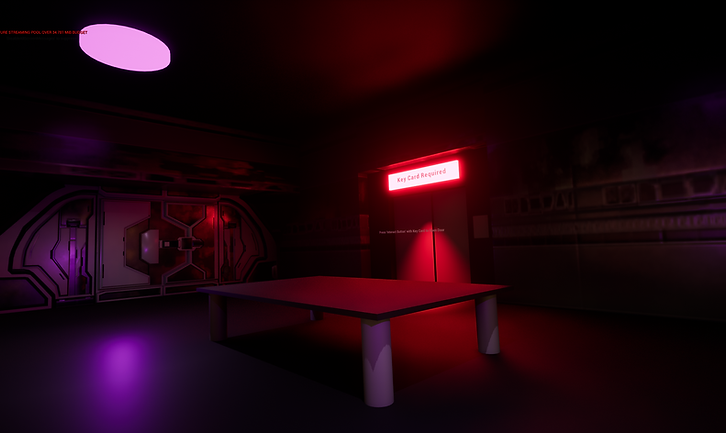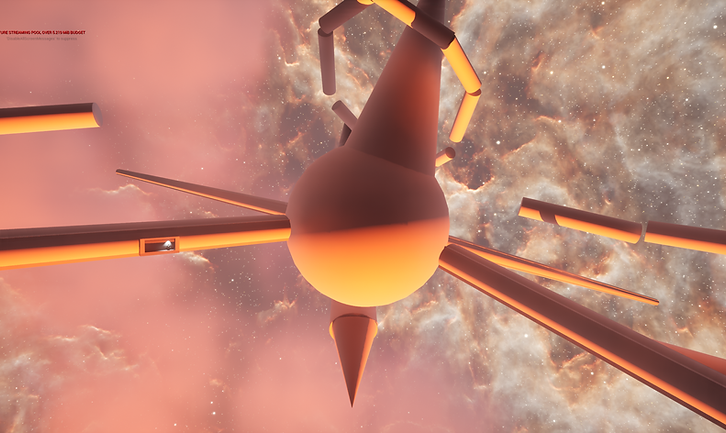
The Last
Solo Student Environmental Storytelling Project at DigiPen Institute of Technology
Roles: Narrative Designer, Level Designer.
Tools: Unreal Engine 5, Microsoft Word.
Skills: White-Boxing, Creative Writing, World-Building, Environmental Storytelling, Blueprinting, Playtesting.
Genre: First-Person, Horror Walling Simulator.
Target Audience: Players driven to become immersed in the world they are exploring and put themselves in the shoes of the game protagonist to experience a story told through the actions of the player and their journey.
Environmental Storytelling
The Last is a level design study where I was challenged to using only environmental storytelling to tell a complete multi act short story. For this project I both outlined the story and interpreted it into the level white-box. I also made use of an asset pack to gain practice with set dressing in some parts of the level design to help further bring to life the environment I created. See below my creative process from start to end for realizing this story!

Thematic Direction
Developing a Topic to drive the Game

Finding My Thesis Statement
The Last explores the idea of moving forward without complete closure.
For this project, I knew I wanted to work in the science fiction genre, and likewise I knew that I also wanted to try my hand at leaning into the horror direction as well. I hold a lot of value in the importance of working with a thesis statement in mind, and using that to guide the direction of every element of the game design, and so, figuring out what that would be was my first challenge.
I had this idea for creating a simulation block aboard a space station, where someone would be held under a simulation of a beach paradise while in the real world, the space station had become destroyed (possibly inspired on accident by the post credit scene to Spider-man Far From Home, where Nick Fury is simulating a beach while aboard a Skrull space vessel).
I though the idea of switching between environments could make for a interesting storytelling device, and it could also be used for helping break up the act structure by showing the player a version of the space before and after entering this simulation. This got me thinking about time passing and how given the withering space station setting, the player would need to move quickly if they wanted to survive the ordeal, which was a phenomenon I relayed back to the idea of closure.
Sometimes, often even, to do what is best for yourself, you may have to accept moving on from something before getting every bookend, answer, or piece information you may have wanted. It can be hard to come to terms with, but to look out for yourself, sometimes it is what you have to do. This was an idea I hadn't really seen explored in video games I had played, and so I decided I would set it as my thesis statement running through this game.


Writing the Story
Outlining the Plot and Act Structure of the Game

Structural Bounds
A limitation while working on this project, as it was done for a level design class, is we had to build our stories around a set five act structure which was laid out as follows:
-
Setup
-
Hook
-
Development
-
Turn
-
Resolution
Working off of this limitation actually ended up being a really helpful tool for structuring everything, which helped me get to the level design faster. I knew I wanted to work the game around the simulation block moment, but this structural tool was just what I needed to fill in the blanks around it.
Setup and Hook
The game would need to start by introducing the player to some understanding of normalcy in the setting. Who is the character? What is their setting? These idea's are things the environment would need to communicate before the plot could go into motion.
Getting the player from this introduction and into the simulation sequence would occur as a result of the space station falling under attack. This gave me an opportunity to have the character black out, which would blur the suspension of disbelief as the fatality of the character would immediately go into question.
Development
The simulation breaks up the first two acts from the back two. The player is introduced to a unique space, but is quickly ejected from it back into the space they knew, but now very different. This creates the opportunity to break up a before and after, but it also creates a question about how the player got in the simulation to begin with since the player had full control when they blacked out.
Turn and Resolution
Out the other side of the simulation, the player is presented with the practical answer as to what they just experienced, which helps ground the transition in a reality which doesn't break immersion.
Exploring the destroyed space station then takes a focus on learning that it's destruction was no accident, and that there is some other party involved here. This party finally becomes revealed as responsible for putting the player character under simulation, and the player becoming free of that simulation is reason enough for this party to come out of hiding and ensuring that the player will be the last wittiness of what has happened to this ship.


My Design Documentation
Environmental Storytelling
Stepping onto the Lunar Nemesis

My Flavor of Sci-fi
The first step of white-boxing the space was gathering a great deal of reference images for the kind of space I was trying to create. I looked at various images from games in the sci-fi horror genre, as well as sci-fi games in general.
Once I found a style I was into, then I went searching the unreal asset store for tools for set dressing and skyboxes I could use for creating the outer space aesthetic. The pack I ended up finding gave me a lot tools for creating interior spaces, which helped also save time on modeling in some places, which was great because then I was instead able to focus my modeling on creating specific pieces that were important for the story and characters, such as the space station itself and the crow bar found in the player character's private quatres at the start of the game.

Moments in (the) Space
With all of these tools, I was able to use a bit of blueprinting and lighting practices to build out the level design.
I made use of Unreal Engine's built in text to highlight anything that my tools weren't well equipped for so that what I was trying to get across in the white-box could be fully transparent for a potential environment art team to pick up off of.
I made use of lighting and sight lines to draw the players attention to things I needed them to see to piece together the story, as well as guide them through the space. I kept the environment overall relatively minimalist as to not distract from the important elements. Exceptions to this are used to emphasize the disarrayed status of the space station, so clutter sometimes does make a lot of sense.
I also used simple sound effects and Unreal's starter content particle effects to add character to some of the destruction, especially when I wanted the player to feel specific emotions in reaction to the environment such as shock and being overwhelmed during the ship falling under fire towards the beginning of the game.
While my technical skills have improved radically since working on this project, one technical hurdle which came up was figuring out how the ejection of the player character into the vacuum of space would work. I was able to work out a simple prototype solution of this for the final product where a duplicated version of the space station would be rotated to sit on it's side. This way, when the player character loads into the level, Unreal's out of the box physics systems could handle the presentation all on it's own, pulling the player character's body further and further away from the space station over time.

